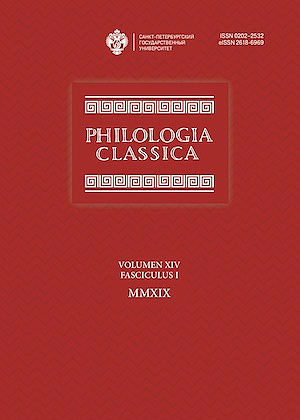Corinth and Ephyra in Simonides’ Elegy (fr. 15–16 West, Plut. De malign. 872D–E)
DOI:
https://doi.org/10.21638/11701/spbu20.2019.101Abstract
Plutarch cited Simonides’ elegy with toponyms Corinth and Ephyra as proof that Corinthians had participated directly in the battle of Plataea (Plut. De malign. 872D–E). Though several places in Greece bore the name Ephyra (Strab. 8, 3, 5), a number of features in Simonides’ text allows us to identify Ephyra with Corinth, but the juxtaposition of two names of the same city needs to be explained. On the one hand, Ephyra could denote a territory adjacent to Corinth, but it is difficult to localize it; attempts were made to identify the historical Ephyra with one of the settlements of the Mycenaean period in the vicinity of Corinth (Korakou and Aetopetra). On the other hand, several sources mention the fact that Ephyra could be used as the ancient name for Corinth, and Aristarchus remarked that in Homer Corinth was called Ephyra in the characters’ speeches (i. e. by Glaucus); to be sure, in literary texts, and especially in poetry, the toponyms Ephyra and Corinth are virtually interchangeable. It thus seems probable that Simonides mentioned Ephyra as the ancient name of Corinth, implying by the use of this toponym, as well as by the mentioning of Glaucus, that the Corinthians who fought at Plataea were equal in prowess to the Homeric heroes.
Keywords:
Simonides, Corinth, Ephyra, battle of Plataea, Acrocorinth, Glaucus, Korakou, Aetopetra
Downloads
References
Graziosi B., Haubold J. (comm.) Homer. Iliad. Book VI. Cambridge: University Press, 2010.
Downloads
Published
How to Cite
Issue
Section
License
Articles of "Philologia Classica" are open access distributed under the terms of the License Agreement with Saint Petersburg State University, which permits to the authors unrestricted distribution and self-archiving free of charge.






